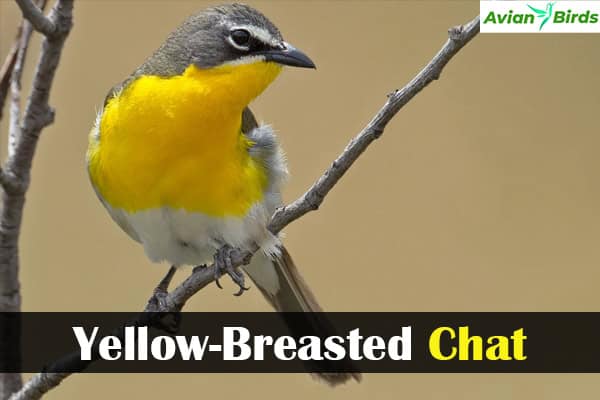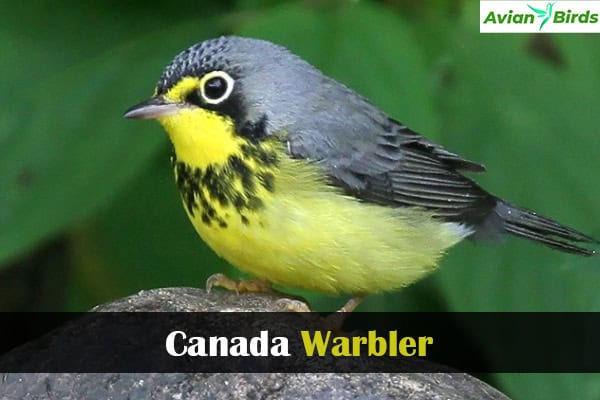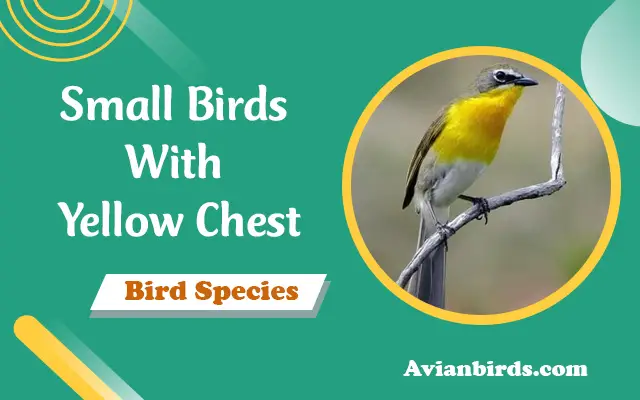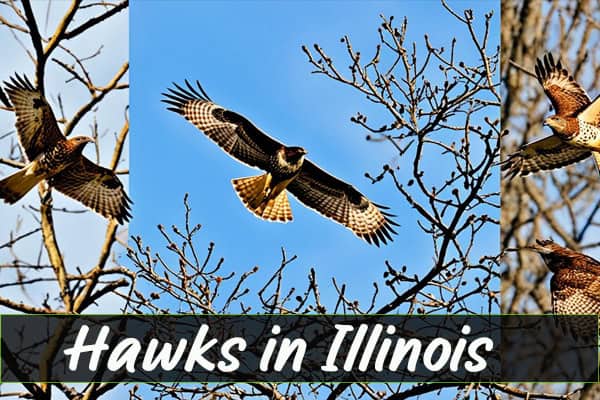Small Birds With Yellow Chests (With Pictures)
Small birds with yellow chests are fascinating creatures that bring life and color to our surroundings. I’ve researched these tiny wonders, uncovering unique traits and behaviors. From vibrant feathers to distinct songs, each bird has a story. I’ll share insights on their habitats, diets, and how to spot them. Join me to explore these feathered gems. Let’s dive into their colorful world together.
Characteristics of Birds with Yellow Chests
Birds with yellow chests are very colorful and have special features. These traits help us identify birds and make birdwatching more fun. Their bright yellow feathers stand out against the greenery they live in.
Distinctive Features
Many small birds are easy to spot because of their unique features. For example, the American Goldfinch has a bright yellow body. Yellow-throated Vireos have yellow eye rings and throats.
During mating, males and females show off their bright colors more than females, similar to how the oriole displays its vibrant feathers. Birds with long tails, big bodies, and special markings like white spectacles catch our eye. These differences tell us about their lives and how they adapt.
Color Patterns and Plumage
The colors and patterns of yellow-chested birds, such as the yellow-breasted chat, are truly captivating as they perch among the branches. The Yellow-Breasted Chat has a yellow breast and gray wings, making it stand out. Magnolia Warbler and the yellow-breasted chat are both colorful avian species.s have a black “necklace” on their yellow breast, creating a unique look.
Some birds, like the Common Yellowthroat, like to hang out near certain plants. This adds to the fun of birdwatching. Knowing about these colors helps us see the beauty and variety of birds.
| Species | Distinctive Features | Color Patterns |
|---|---|---|
| American Goldfinch | Vibrant yellow body | Bright yellow with black wings |
| Yellow Warbler | Soft yellow with streaks | Bright yellow overall with olive back |
| Prothonotary Warbler | Charming, round body | Yellow underside with blue-grey wings |
| Yellow-Breasted Chat | Gray upperparts with white markings | Vivid yellow breast contrasts with gray |
| Magnolia Warbler | Distinctive black “necklace” | Yellow breast with dark streaks |
Common Species of Small Birds With Yellow Chest
Many small birds with yellow chests are fascinating. They can be seen in our backyards or at nature centers. Let’s look at three special ones: the yellow-breasted chat, prothonotary warbler, and Canada warbler.
1. Yellow-Breasted Chat
- Scientific Name: Icteria virens
- Size: 6.5 to 7.5 inches
- Weight: 1.5 to 2.0 ounces
- Lifespan: 2 to 4 years
- Diet: Insects, berries, and fruits

The yellow-breasted chat has a bright yellow chest and bold markings. It lives in dense thickets, where it finds food. Its songs are a joy to hear during spring.
2. Prothonotary Warbler
- Scientific Name: Protonotaria citrea
- Size: 5.5 to 6.3 inches (14 to 16 cm)
- Weight: 0.4 to 0.5 ounces (11 to 14 grams)
- Lifespan: Typically 3 to 6 years
- Diet: Insects, spiders, and some plant matter

The prothonotary warbler is known for its olive-green back and yellow belly. It lives in wetlands and swamps in North America and is special because it nests in tree cavities.
3. Canada Warbler
- Scientific Name: Wilsonia canadensis
- Size: 4.5 to 5.5 inches (11 to 14 cm)
- Weight: About 0.4 to 0.5 ounces (11 to 14 grams)
- Lifespan: Typically 2 to 5 years
- Diet: Insects, spiders, and some berries

The Canada warbler is gray on top and yellow on the bottom with dark streaks. It loves dense, shrub-filled areas and is seen by birdwatchers on its way to Canada and the northeastern US.
Habitat of Small Birds With Yellow Chest
It’s important to know where small birds with yellow chests live. This helps us protect them and enjoy watching birds. These birds need safe places and lots of food to survive and have babies.
Preferred Environments
These birds love certain places to live. For example, the yellow-breasted chat thrives in:
- Dense thickets that offer cover from predators.
- Wetlands that are rich in insects and berries.
- Forest edges provide a transition between open areas and woods.
- Urban gardens that mimic natural settings and serve as refuge can attract birds with yellow bellies, offering them a safe place to perch.
Common Habitats Across North America
In North America, these birds live in many places, often in tangled shrubs and trees. They like shrubby habitats and open spaces to thrive.
| Habitat Type | Key Characteristics | Typical Locations include shrubby habitats that support various bird species. |
|---|---|---|
| Wetlands | Rich in water bodies and a variety of plant life, it is excellent for foraging. | Southern U.S., parts of Canada |
| Dense Thickets | Provides cover and safety for nesting and feeding in shrubby habitats. | In certain rural areas, suburban gardens |
| Forest Edges | Offers a mix of open and sheltered spaces. | Southeastern U.S., Great Lakes region |
| Shrublands | Ideal for nesting, with ample food supply nearby. | Western U.S., areas of regrowth |
These different places are key to keeping these birds alive. By protecting their homes, we help these birds and our world.
Breeding Season and Nesting Habits
Learning about the breeding season and nesting habits of small birds is fascinating. These birds show amazing behavior during breeding. They display vibrant colors, especially yellow chests, and stripes, to attract mates.
Breeding Behavior of Small Birds
Male small birds sing and fly to attract females and mark their territory. The Yellow-breasted Chat, for example, makes different sounds to attract mates. Some males even have more than one mate.
Studies show that some chicks have different fathers. This shows that not all birds stay with one mate forever.
Nesting Locations and Structure
Nesting habits vary among these birds. Many, like the Yellow-breasted Chat, nest in dense shrubs. Their nests are made of grass, twigs, and other plants to keep their young safe.
However, they face challenges like nest parasitism from Brown-headed Cowbirds, which lay their eggs in the nests of Yellow-breasted Chats. Despite this, small nesting birds find ways to keep their populations going during spring and summer.
Feeding Habits of These Colorful Birds
Small birds with yellow chests are very good at finding food. They eat insects, berries, and other natural foods. Their diet changes with the seasons, showing their flexibility in avian environments.
Diet Composition
Like the Yellow-breasted Chat, these birds have a wide range of foods. In warmer months, they mostly eat insects. Their diet includes insects and berries, which are often hard to find in winter.
- Insects: caterpillars, beetles, ants, and bees
- Fruits: strawberries, blueberries, blackberries, and elderberries
- Spiders and other small invertebrates
This varied diet helps keep ecosystems balanced. It controls insect numbers and spreads seeds.
Common Food Sources
Knowing what these birds eat helps us understand them better. They mainly eat:
| Food Type | Examples |
|---|---|
| Insects | Ants, beetles, mayflies, moths |
| Berries | Raspberries, strawberries, elderberries |
| Seeds | Plant-based seeds during winter months |
These birds change their diet with the seasons. This shows their ability to adapt and survive. Watching them helps us see their importance in nature.
Identifying Small Birds With Yellow Chest
Spotting small birds with yellow chests is fun for birdwatchers. We learn by watching their colors, bill shapes, and size, particularly noting the differences in the beaks of various species. Knowing how they act helps us find these brushy birds.
Field Marks and Behavior
When watching small birds, look at important field marks. Their bright colors, like yellow chests, tell us a lot. For example, the American Goldfinch turns bright yellow in the breeding season.
Other birds, like the Yellow Warbler and Prothonotary Warbler, show unique traits. Key features include:
- Bright yellow eye rings in yellow-troated vireos.
- Patterns of black and yellow in the Western Tanager.
- Unique songs and calls that help identify warblers, like Wilson’s Warbler and Common Yellowthroat.
Seeing these birds often helps us understand their habits. For instance, female Summer Tanagers visit backyard feeders. Yellow-breasted chats are fun to watch in dense thickets.
Tips for Birdwatching
Good birdwatching tips can help us see more small birds with yellow chests, particularly in Central America. Here are some tips:
- Look in dense places, like thickets near water, where birds like to eat.
- Use binoculars to watch birds from far away without scaring them.
- Learn their calls and songs to identify better the yellow-breasted chat and other birds with yellow bellies. Knowing these sounds helps us identify birds even when we can’t see them.
Using these tips improves our ability to spot small birds. As we explore nature, we have amazing encounters with these birds.
Vocalizations of Birds with Yellow Chests
Small birds with yellow chests make their habitats come alive with sound. Their unique songs make it fun to identify them, and learning their songs helps us enjoy birdwatching even more.
Understanding Their Songs
The songs of these birds are truly special. For instance, the Yellow-Breasted Chat sings in a playful way. It mixes different notes in its song.
The Protonotary Warbler, on the other hand, sings clear whistles and chirps, which help it stand out in quieter places. Paying attention to these sounds helps us spot them in nature.
Common Calls and Sounds
Many birds with yellow chests make various sounds. Their calls can mean different things. They might sing to attract mates, warn others, or talk to their chicks.
Learning about these sounds and how to identify them deepens our love for birds. Hearing a Yellow-Breasted Chat sing is unforgettable for bird lovers, as its cackle adds to the melody of the environment.
| Species | Vocalization Description | Common Contexts |
|---|---|---|
| Yellow-Breasted Chat | Improvisational melodies | Mating season, territory establishment |
| Prothonotary Warbler | Clear whistles and chirps | Nest building, family communication |
| Canada Warbler | Repeated, sharp notes | Warning calls, territorial claims |
Importance of Conservation
It’s very important to save small birds with yellow chests. Their numbers are going down because of many problems, and we need to understand these issues to help them.
Things like city growth, pollution, and farming harm their homes. We can help protect their places, ensuring safe perches for birds with yellow bellies.
Threats to Their Habitats
Many things threaten the homes of these colorful avian birds:
- Urban growth takes over their natural homes.
- Farming spreads out, breaking up their paths.
- Chemicals pollute their food and homes.
- Changes in weather hurt where they live and find food.
How We Can Help
We can all help save these birds. Here’s how:
- Support efforts to keep their homes safe.
- Join local groups that protect their habitats.
- Make our yards safe for birds by planting native plants.
- Learn and share why saving birds is so important.
Photos of Small Birds With Yellow Chest
We love the beauty of small birds with yellow chests. A photo gallery shows their charm. Taking pictures in different places makes us appreciate their unique looks more.
From the American Goldfinch to the Yellow-Breasted Chat, each bird is stunning. They make great subjects for bird photography.
Gallery of Beautiful Images
Our collection includes many small bird pictures from places like Foley, Minnesota, San Diego, California, and Hawaii. Each place has its own birds and behaviors. For example, spring and summer bring new sights.
Birdwatchers’ excitement is often caught in photos. It shows how much they love these birds.
Photography Tips for Birdwatchers
Catching bird images takes skill and patience. Here are tips to get better:
- Use a telephoto lens to zoom in without scaring the bird.
- Be quiet not to scare the birds and keep a natural setting.
- Shoot in early mornings or late afternoons for the best light.
Whether you’re a pro or just starting out, these tips can help. Bird photography lets us enjoy and share nature’s wonders, including the beauty of small birds with yellow chests.
Conclusion
Small birds with yellow chests are key to our ecosystems. They add color and sounds to their homes. Their unique looks and fun behaviors bring us joy and wonder.
But, they face big challenges like losing their homes and being bullied by other birds. We must help them by protecting their places.
By studying and loving these birds, we can help keep their homes safe. This way, we ensure others can see them too. We connect with nature and take care of their homes.
Seeing small birds is more than just watching. It’s a call to help protect them. By respecting these birds and their roles, we keep our ecosystems healthy. Let’s work together to keep bird species beautiful in our world.
Read More🐦Related Articles:
Frequently Asked Questions
Q1. What small bird has a yellow chest and black markings?
The American Goldfinch, or Yellow Warbler, is a common bird with a yellow chest and black markings.
Q2. How to identify small yellow-chested birds in my backyard?
Look for distinctive yellow coloring on the chest, often paired with black or brown markings on the wings or head. Common examples include Yellow Warblers and American Goldfinches.
Q3. What type of bird has a bright yellow chest?
Birds with bright yellow chests include the Yellow Warbler, American Goldfinch, and Common Yellowthroat.
Q4. Are yellow-chested birds common in North America?
Yes, many species with yellow chests, like the American Goldfinch and Yellow Warbler, are common in North America.
Q5. Which birds have a yellow chest and black stripe?
The Common Yellowthroat and some species of warblers have a yellow chest with a black stripe or mask.
Q6. Where can I find small birds with yellow chests in the wild?
Look in wooded areas, meadows, and near water sources, especially during spring and summer.
Q7. Why do some birds have yellow chests?
Yellow coloring can attract mates, camouflage, or signaling to other birds.
Q8. What are the most common yellow-chested birds in Europe?
The Eurasian Blue Tit and European Greenfinch are among the common yellow-chested birds in Europe.
Q9. How to attract small yellow-breasted birds to your garden?
Provide seed feeders, native plants, and water sources to attract yellow-chested birds.
Q10. What is the difference between a Yellow Warbler and a Goldfinch?
Yellow Warblers are uniformly yellow with reddish streaks, while Goldfinches have black wings and a more distinct color contrast.







